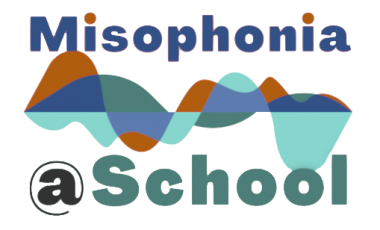

Glossary
Anterior insula
In the mammalian brain, in both hemispheres, it is the front of the so-called ‘insular cortex’. Anterior insula is known to be involved in emotion processing, motor control, interpersonal experience, and in control activity of our internal organs such heart/lungs.
Arousal
The reaction which occurs in a misophonic person when exposed to ‘trigger sounds’. It can be at sensory level, in the body or emotional. It consists in a distressing feeling and causes what is called a ‘fight or flight’ response.
Biofeedback (see also Neurofeedback)
It is a training process that allows a subject to control body physiological response such as heart rate and skin temperature when exposed to different sensory stimulation or feeling emotions.
Cognitive Behavioral Therapy (CBT)
Cognitive Behavioral Therapy (CBT) is generally oriented to make the subject aware of their own ‘beliefs’ (knowledge, thoughts, past experiences) related to certain situations or stimuli sources of discomfort, anxiety, or malaise. The awareness and reformulation of these beliefs is aimed at enabling the individual to develop skills of ‘coping’ regarding the situations themselves.
Comorbidity
The coexistence of two or more pathologies in the same person is an element of great interest, particularly with regard to pathologies subject to initial studies or first definition, such as misophonia.
‘Fight or flight’ response
It is a physiological neuronal reaction that occurs in response to a situation felt as dangerous and typically occurs in people with misophonia when they are hyperexcited by trigger sounds. It has a great impact on the subject in which it is unleashed because it affects the Autonomic Nervous System and then results in the release of various hormones.
Frequency (pitch of the sound)
In acoustics, it is defined as the number of vibrations per time unit (second). A high number of vibrations per second produces high-pitched sounds, like the chirping of birds, whereas a low number of vibrations per second produces low-pitched sounds, like the rumble of thunder.
Hyperacusis
It consists in the increased sensitivity to sound. In hyperacusis, sufferers experience quiet and normally comfortable sounds to be very loud.
Inclusion
Socially speaking, it regards individual inclusion and participation in various social spheres and includes school and work inclusion. Its ultimate goal is to ensure the active involvement of each individual within society regardless the presence of limiting elements.
Learning
It is the key activity that allows the individual to build his/her own framework of knowledge about the reality that surrounds him. It can take place in formal contexts such as school, university, or vocational training, non-formal contexts, like visiting a museum and going on an excursion as a cultural activity, or informal contexts, like conversations with friends or information learned from movies or documentaries on TV.
Loudness (sound)
In acoustics, it is the subjective perception of sound intensity (permitting the distinction between loud and weak sounds). Differently from hyperacusis, in misophonia loudness is not an issue: both weak and loud sounds can cause distress.
Mimicry
It consists of the ‘automatic’ and unconsciously copying the action of others. The mimicry mechanism is believed to play an important role in the occurrence of the misophonic reaction.
Neurofeedback (see also Biofeedback)
It is a kind of biofeedback that regards brain activity: it is usually based on the flow of information obtained through Electroencephalography – EEG.
Neuroscience
It consists in all the studies concerning the nervous system and includes several biological fields such as molecular biology, cell biology, developmental biology, physiology, biochemistry, anatomy, genetics etc. Despite being very ancient, neuroscience received a decisive impulse in the second half of the twentieth century, thanks to the development of modern medical and information technologies.
Phonophobia
It is the fear of sound, generally also of sounds considered normal and at acceptable volume, but it is not exclusively caused by a specific set of sounds as in the case of misophonia.
Transcranial Magnetic Stimulation (TMS)
It is a therapeutic method that consists in the application of transcranial magnetic stimulators, non-invasive, with the function of remodulating the activity of brain centers associated with a series of medical and psychiatric disorders.
Trigger sound
This indicates those sounds that, in a particularly violent way, trigger the misophonic reaction in the subjects who are affected. These are primarily the sounds of chewing, swallowing, and breathing produced by others.
White noise
It is the sound produced by the set of all audible frequencies produced with equal intensity: for this reason, it is very effective in masking environmental sounds that can be annoying, such as trigger sounds. It resembles the noise produced by pitter-pattering water, heard with a downpour or near a waterfall.
Outputs
The Misophonia@School project will carry out study and implementation activities addressed to produce the following four Intellectual Outputs:
- — IO1: Misophonia Mobile Application.
- — IO2: Misophonia E-learning Course.
- — IO3: Misophonia Handbook.
- — IO4: Misophonia Web Resource Centre.
All Misophonia@School products will be progressively available on this website in 9 languages: English, Italian, Spanish, Poland, Turkish, German, Slovenian, Greek and Icelandic.
The European Commission’s support for the production of this web resource centre does not constitute an endorsement of the contents, which reflect the views only of the authors, and the Commission cannot be held responsible for any use which may be made of the information contained therein.
Project number: 2020-1-IT02-KA201-079622

© Misophonia@School 2023